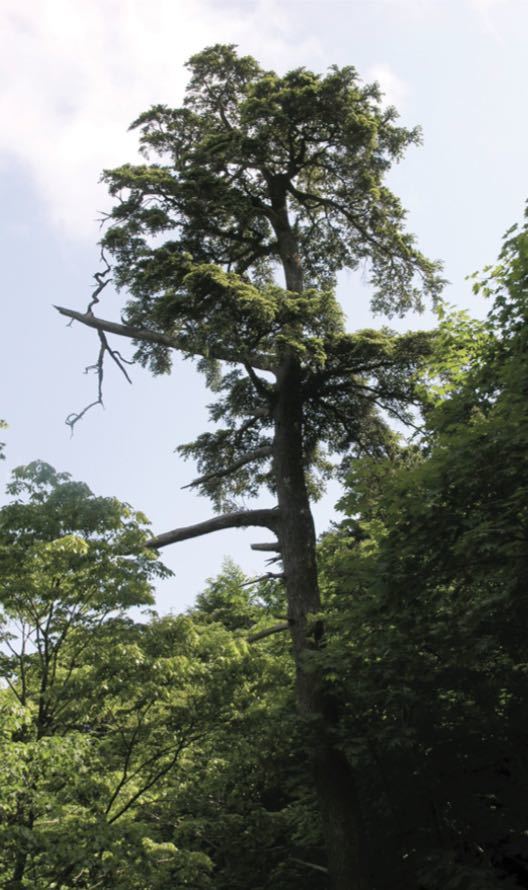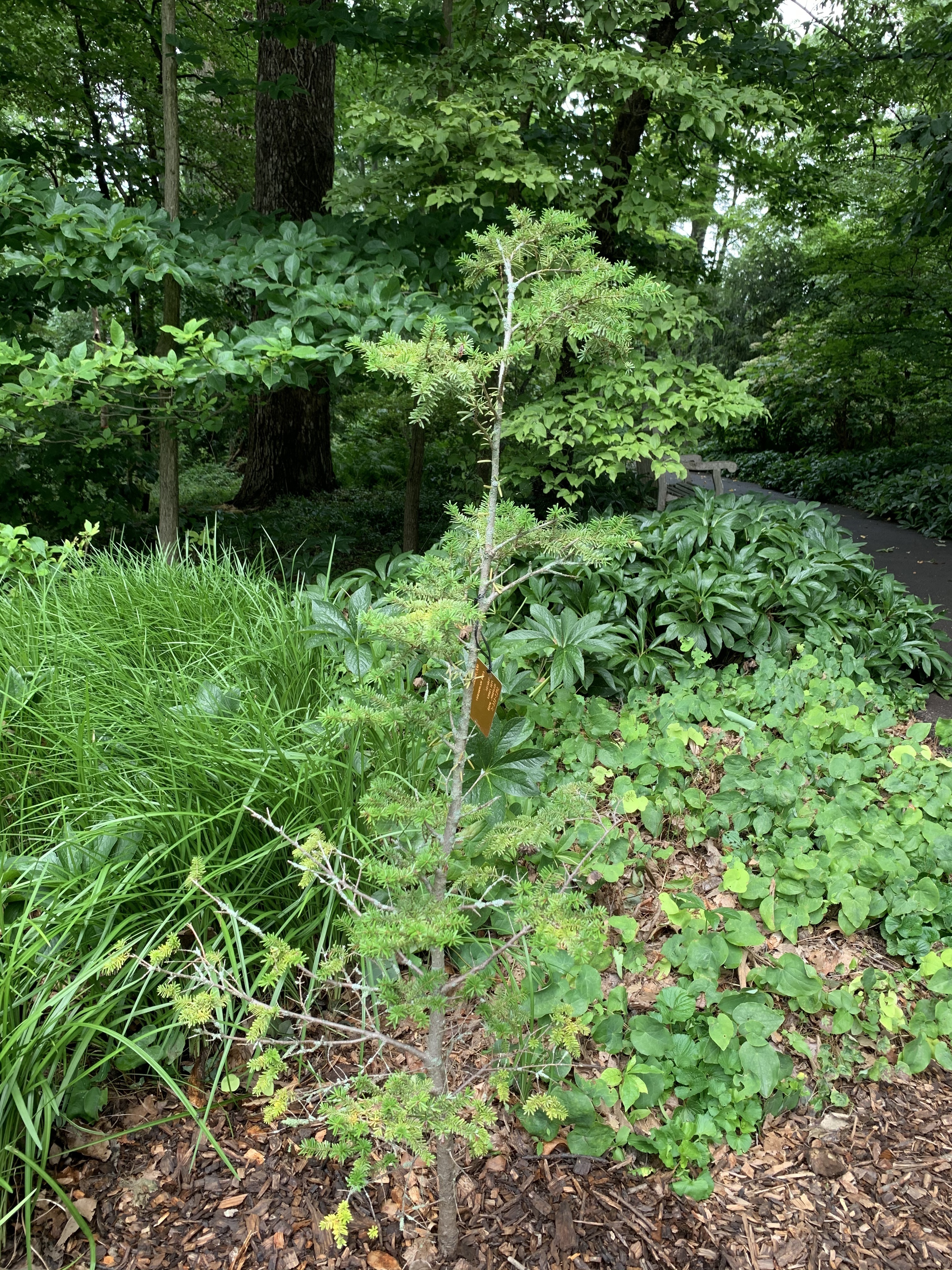Tsuga ulleungensis, as described in 2017 by G. P. Holman, Del Tredici, Havill, N. S. Lee, and C. S. Campbell, in A new species and introgression in eastern Asian hemlocks (Pinaceae: Tsuga), published in Systematic Botany. vol.42, no.4, is commonly known as Ulleungdo hemlock. The species name refers to Ulleungdo (울릉ë„), a volcanic island in the Sea of Japan about 90 miles (140 km) east of the Korean Peninsula.
Description. Ulleungdo hemlock is an evergreen, coniferous species of tree that grows to mature heights of 70 feet (22 m) tall, with a trunk up to 32 inches (80 cm) in diameter, measured at breast height.
- Twigs are glabrous, measuring 0.04 to 0.06 inch (1 - 1.5 mm) in diameter.
- Foliar buds are glabrous, measuring 0.08 to 0.12 inch (2 - 3 mm) long and 0. 64 to 0.096 inch (1.8-2.4 mm) wide, with globular or obovoid shape; foliar scales have orbicular shape, and are dark brown in color, with crenate margins.
- Leaves are held in a linear fashion, measuring 0.32 to 0.56 inch (8 - 14 mm) long and 0.068 to 0.084 (1.7 - 2.1 mm) with 0.036 to 0.064 inch (0.9 - 1.6 mm) petioles. Needles have attenuate bases; leaf margins are entire and slightly thickened; apices are emarginate and hypostomatic. Abaxially, needles have stomata in two broad, dull-white to buff bands on either side of midrib, each band with mostly 8 rows of stomata, decreasing to 2 to 3 proximally, and 4 to 5 distally; with a single resin canal, measuring 0.016 to 0.028 inch (0.4 - 0.7 mm ) in diameter at the leaf's midpoint.
- Pollen cones measure 0.16 to 0.32 inch (4 - 8 mm) long, with reddish-purple color.
- Young seed cones are purple in color; bracts are broader than long, with more or less crenulate margins; seed cone apices have a bifid apical projection half as long as the bract body. Mature seed cones have a globular to ovoid shape, and measure 0.76 to 1.2 inches (19 - 30 mm) long and 0.72 to 1.08 inches (18 - 26 mm) when open; on 0.04 to 0.08 inch (1 - 2 mm) long peduncles.
- Cone scales number 20 to 26 per cones, and measure 0.36 to 0.6 inch (9 - 15 mm) and 0.4 to 0.6 inch (10 -15 mm) long.
- Seeds measure 0.16 to 0.22 inch (4 - 5.5 mm) long and 0.08 to 0.1 inch (2 - 2.5 mm) long, with wings measuring 0.18 to 0.34 (4.5 - 8.5 mm) long and 0.136 to 0.168 inch (3.4 - 4.2 mm) wide.
T. diversifolia is readily distinguished by its hairy twigs and pure white stomatal bands. T. sieboldii is distinguished by thicker leaf resin canals, and erose to denticulate cone-scale bract margins
Distribution. This species is native to South Korea - Ulleungdo, a volcanic island, where one can find it growing on north-facing slopes at elevations of 1,020 to 1,640 feet (310 - 500 m) above sea level, primarily on well-drained rocky ridges in forests dominated by Pinus parviflora with secondary Acer pseudosieboldianum, Camellia japonica, and Fagus multinervis.
Hardy to USDA Zone 6, cold hardiness of0 to -10ºF / -17.8 to -23.3ºC.

